Key takeaways:
- Using the right combination of popular and niche hashtags significantly boosts engagement and reach.
- Timely utilization of trending hashtags can enhance visibility and capitalize on real-time marketing opportunities.
- Analyzing hashtag performance through metrics like engagement rates helps refine strategies for better results.
- Balancing the number of hashtags and understanding platform-specific best practices are crucial to avoid clutter and misrepresentation.
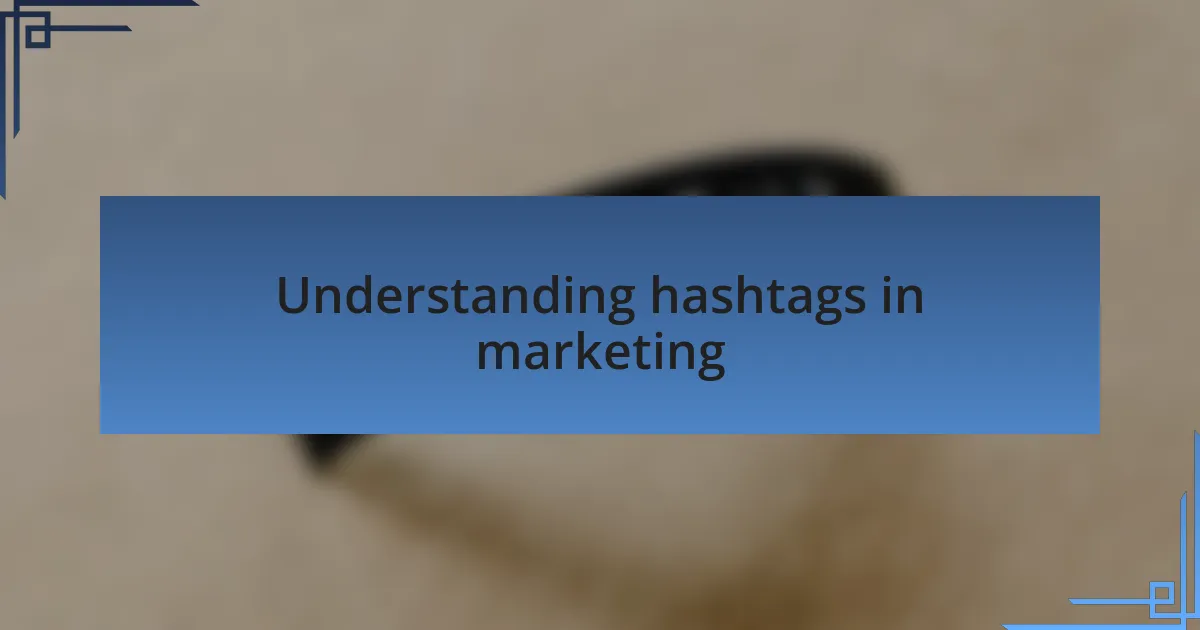
Understanding hashtags in marketing
Hashtags are more than just digital labels; they’re powerful tools that can amplify your marketing efforts. In my experience, using the right hashtag can transform a post from a quiet whisper into a loud shout that attracts attention. Have you ever noticed how a single hashtag can connect you with a broader audience?
When I first started using hashtags, I didn’t realize their impact. I remember posting about a new product launch without any hashtags and barely got any engagement. After experimenting with strategic hashtags, I saw a significant increase in interactions. It was a revelation; it made me think about how easily a brand can reach its audience with the right tagging strategy.
Understanding how hashtags function in different platforms is crucial. For example, Twitter thrives on trending hashtags, making them a great choice for real-time marketing. In contrast, Instagram allows for a mix of popular and niche hashtags, which can greatly enhance discoverability. Have you tried tailoring your hashtags according to the platform? It can make a world of difference in your overall reach and engagement!
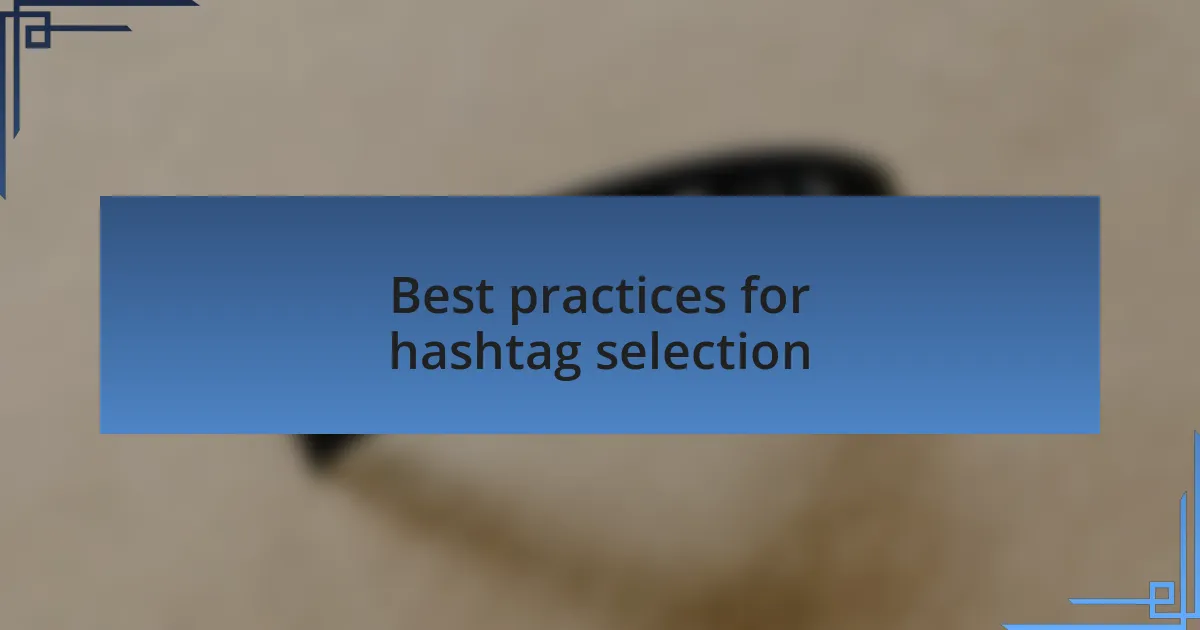
Best practices for hashtag selection
Choosing the right hashtags is not just an art; it’s also a science. From my experience, I’ve found that blending popular hashtags with more niche ones often yields the best results. For instance, during a social media campaign for a local event, I paired a widely recognized hashtag with a few tailored ones specific to our region. The outcome? Our post not only reached a broader audience but also connected with community members who felt an immediate relevance.
When selecting hashtags, think about your audience’s intent. What are they searching for? I remember analyzing engagement metrics after a campaign, realizing that using hashtags relevant to our target demographic dramatically shifted our engagement rates. This taught me to put myself in my audience’s shoes; the questions they ask often shape the hashtags I choose. Are you truly connecting with your potential customers through your hashtag strategy?
Another key practice is to keep track of trending hashtags and stay agile. During a recent marketing push, we decided to ride the wave of a trending topic by incorporating relevant hashtags. While the initial engagement was thrilling, I learned that leveraging trends requires a timely approach. If you see a relevant trend, don’t hesitate—act quickly to make the most of it. Have you considered how quickly a hashtag can pulse through the digital landscape? Timing is everything in hashtag selection.
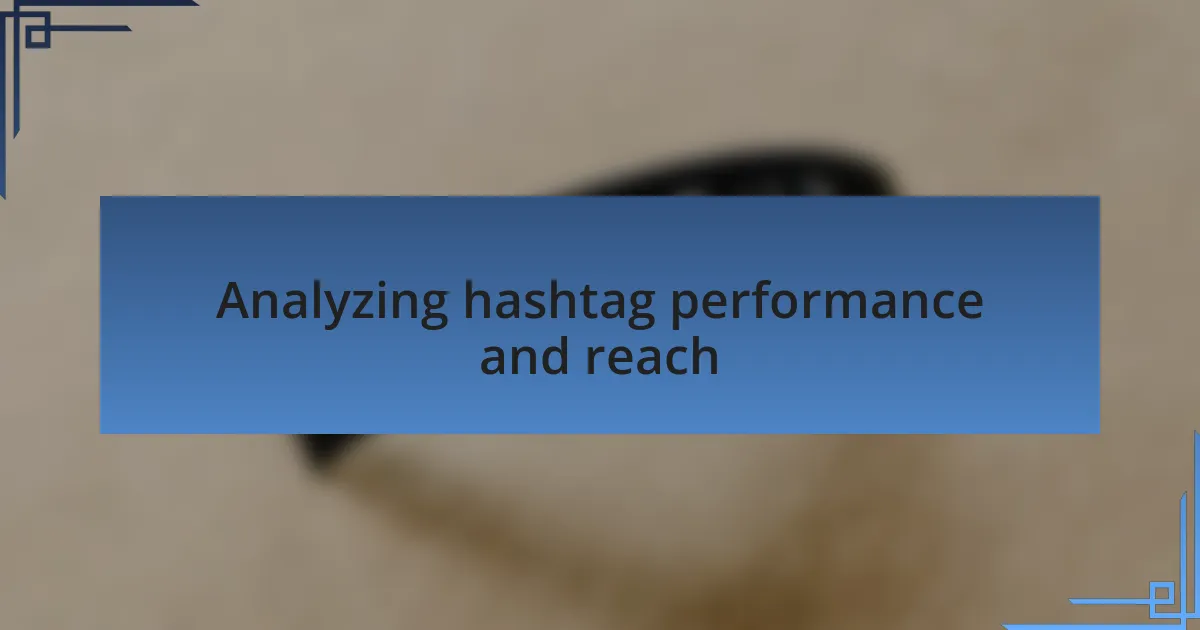
Analyzing hashtag performance and reach
When it comes to analyzing hashtag performance, I always dive into the analytics tools at my disposal. For example, during one particular campaign, I meticulously tracked how each hashtag performed in terms of reach and engagement. I discovered that a seemingly obscure hashtag generated an unexpected spike in likes and shares, making me rethink my initial assumptions about its impact. It’s fascinating how some hashtags, although not widely used, can resonate deeply with a specific audience.
One metric I pay close attention to is engagement rate—it’s the heartbeat of a hashtag’s effectiveness. In another experience, I swapped out a generic hashtag for a more personalized one tailored to our audience’s interests. The result was incredible; not only did engagement double, but I also felt a genuine connection with the followers who interacted with that post. Isn’t it exciting to see how small adjustments can lead to significant changes in your reach?
Additionally, I have found that social listening is invaluable for analyzing hashtag performance. By observing conversations around certain hashtags, I gained insights into audience sentiment. During a recent project, this approach helped me identify not only which hashtags were popular but also the emotions tied to them. Have you considered how people’s feelings about a hashtag can influence its success? Being tuned into these emotional cues can guide your strategy in meaningful ways.
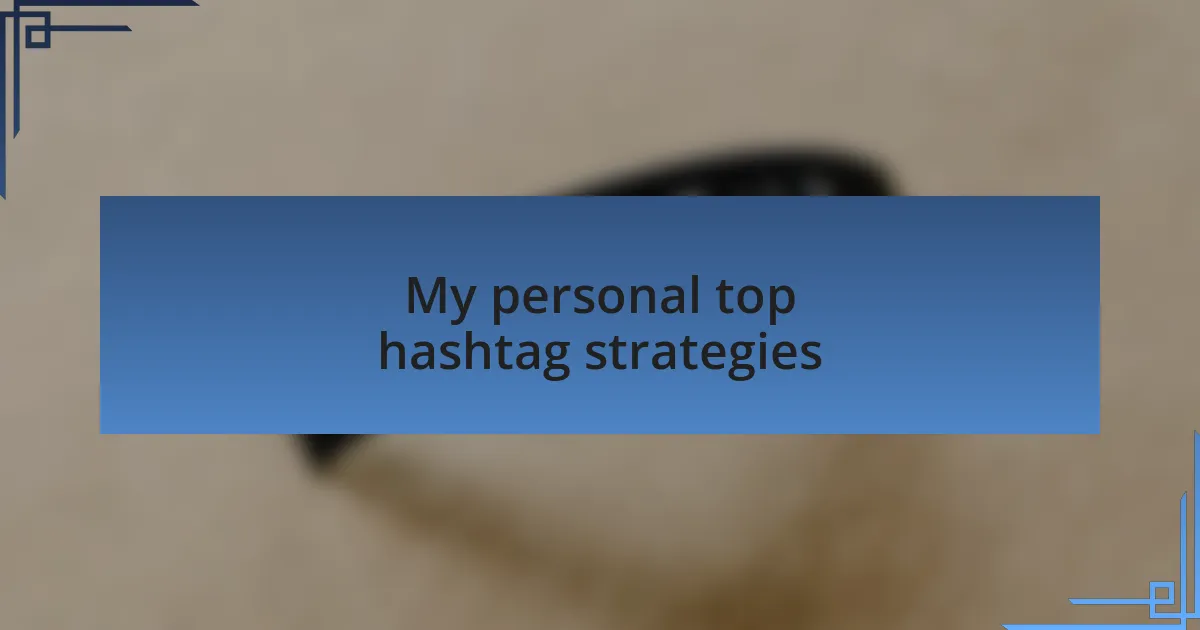
My personal top hashtag strategies
When it comes to selecting hashtags, one strategy that has always worked well for me is to mix popular hashtags with niche ones. For instance, during a campaign for a local event, I paired broad hashtags like #EventMarketing with more localized tags like #NYCArtFest. The combination not only broadened my reach but also connected us with attendees who might have missed the more general tags. It’s exhilarating to witness those targeted connections form.
Another effective strategy is to keep track of trending hashtags in real-time. I remember a time when I noticed a trending topic related to sustainable fashion. I quickly crafted a post that incorporated that hashtag into our ongoing campaign about eco-friendly products. The engagement was remarkable! It made me realize how vital it is to stay nimble and seize the moment; trends can be fleeting, but they can also present incredible opportunities.
Furthermore, I emphasize the importance of creating a unique branded hashtag. I launched one for my personal projects, and although it started small, it became a rallying point for my community. Each time followers used it, I felt a surge of excitement, as it signified a shared journey. Have you ever considered how a dedicated hashtag can transform customer loyalty? It’s amazing how something as simple as a hashtag can foster a sense of belonging and connection among your audience.
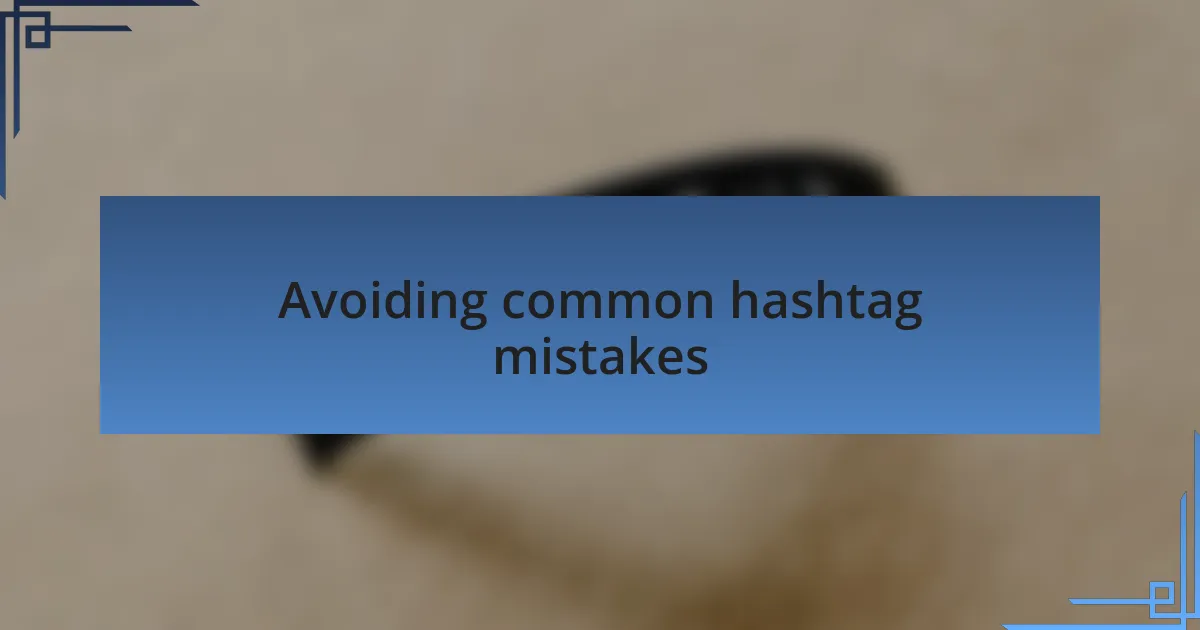
Avoiding common hashtag mistakes
When it comes to hashtag usage, I’ve seen many fall into the trap of overloading their posts with too many hashtags. I remember a specific instance where I used 15 hashtags in one post, thinking it would boost visibility. Instead, it came off cluttered and desperate. Striking the right balance is key; I’ve found that using about three to five relevant hashtags is optimal for audience engagement without overwhelming them.
Another common mistake is failing to research hashtags before using them. I once used a hashtag that I’d seen others use, thinking it was popular, only to find out later it was associated with something entirely different. This experience taught me the importance of ensuring that my hashtags align with my content and brand message. Have you ever considered how a simple oversight can misrepresent your business?
Lastly, ignoring the platform’s best practices can hinder your hashtag success. For instance, I learned the hard way how Instagram and Twitter have different etiquette when it comes to hashtags. On Instagram, using multiple hashtags is acceptable, while Twitter generally shines with a more focused approach. Being aware of these nuances is crucial—and I find that adapting to the platform not only amplifies engagement but also shows my audience that I understand where they’re coming from.
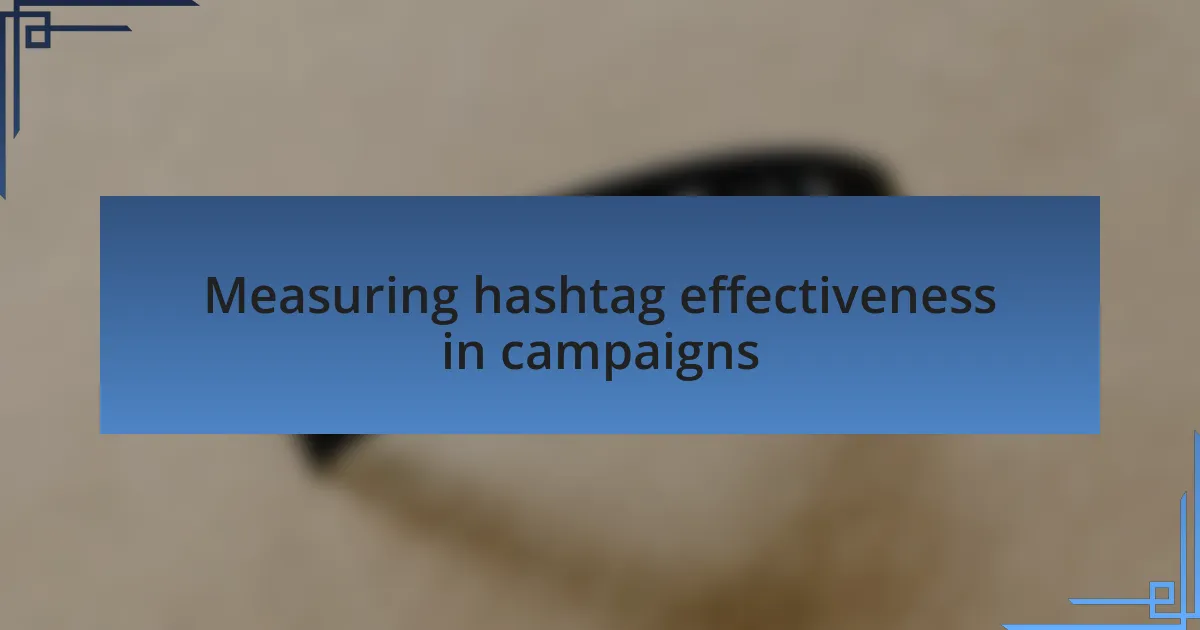
Measuring hashtag effectiveness in campaigns
To truly understand the effectiveness of hashtags in my campaigns, I actively track metrics like engagement rates, reach, and follower growth. I recall a campaign where I thought a trending hashtag would significantly boost my visibility. However, after analyzing the data, I discovered that a more niche hashtag actually led to higher engagement with my target audience. This experience taught me that popularity doesn’t always correlate with effectiveness.
Monitoring hashtag performance on different platforms is also essential. I once ran simultaneous campaigns on Instagram and Twitter, using the same hashtags. It was eye-opening to realize that the hashtags that sparked conversations and increased shares on Instagram didn’t perform as well in Twitter threads. Has this happened to you? It reminds me how crucial it is to adapt to the specific audience on each platform for maximum impact.
I also leverage tools to analyze hashtags over time, which helps me refine my strategy. There was a time when I diligently documented the performance of every hashtag I used for a couple of months. This practice not only highlighted trends but also revealed which hashtags became stagnant. I found myself asked, “What can I replace these with?” It’s amazing how continuous monitoring shapes my campaigns and keeps my content fresh and relevant.